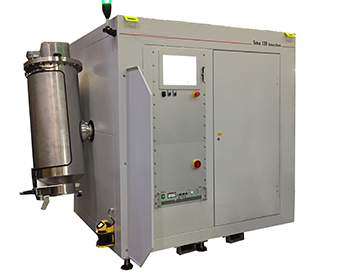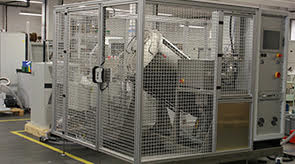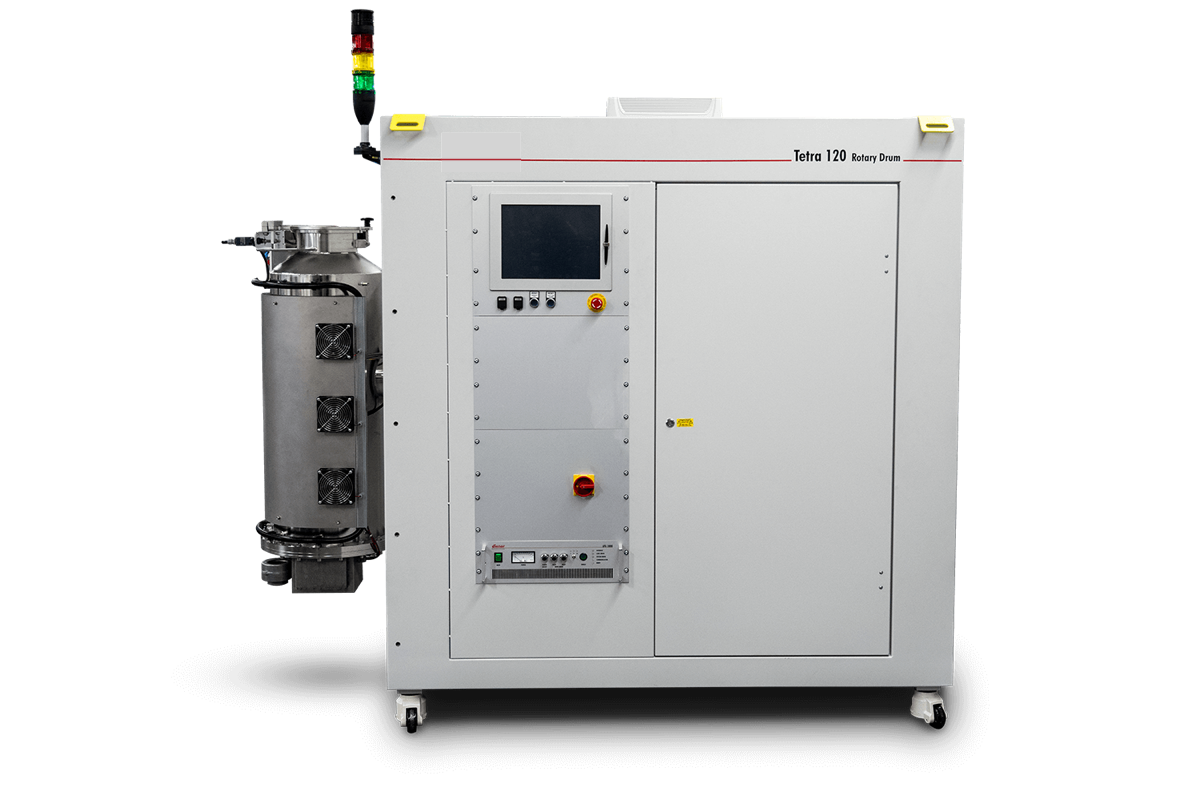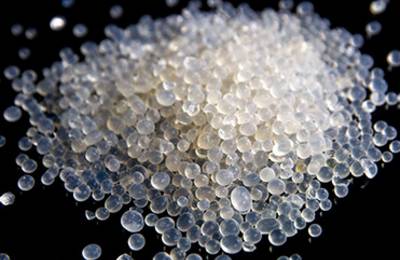Plasma Treatment Articles
Plasma Coating,
Vacuum Chambers
|
2 min read

It can often be a challenge to uniformly process a large volume of parts in a vacuum in a bulk condition. Manufacturers can achieve this by plasma treating all sides of the part or material in bulk. The problem can occur because if they place parts on a tray in a static vacuum chamber, the surface that is touching the tray or other parts is often not treated and will not be completely processed. By using a rotating plasma vacuum chamber, this enables these manufacturers to completely treat a bulk lot of parts.
 There are many applications for the use of a rotating vacuum chamber. The applications include processing materials like O-rings, medical components, elastomeric components, fasteners, seals, and powders. To further the capability of the vacuum chamber, chamber design considerations can include the use of multiple internal segments of the chamber to enable bulk processing of multiple parts of different types at the same time without mixing different product types or skews.
There are many applications for the use of a rotating vacuum chamber. The applications include processing materials like O-rings, medical components, elastomeric components, fasteners, seals, and powders. To further the capability of the vacuum chamber, chamber design considerations can include the use of multiple internal segments of the chamber to enable bulk processing of multiple parts of different types at the same time without mixing different product types or skews.
Making a vacuum chamber rotate will add many additional requirements to standard plasma vacuum chambers. The system needs to have a stable mechanical anchoring system. It will also require a rotary vacuum feedthrough to maintain the vacuum while the chamber is spinning. Other technical requirements will include electrical rotary feedthroughs to enable radio frequency power and chamber cooling, the introduction and removal of process gas, and the ability to time or clock the chamber for reliable loading and unloading the chamber. As you can see, rotating plasma vacuum chambers have additional design constraints from traditional static vacuum chambers typically used in industrial and research applications.

There are additional safety considerations that need to be considered when producing rotating vacuum chambers. To ensure operators do not encounter moving equipment and components, there should be mechanical safety devices and/or volumetric curtains that are used to detect or deter operators from entering the area of moving hardware. Rotation of the vacuum chamber is momentarily stopped, or the entire process stopped altogether in the event an operator enters the area that will trigger the volumetric curtain. These safeguards are put in place to ensure the safe operation of the rotating chamber.
Plasma vacuum chambers are inherently reliable. When an additional rotating element is implemented, it is important to consider design complexity without adding additional risk. Extensive industry experience has led manufacturers to source highly reliable components in the use of bearings and sealing technologies to ensure the long-term reliability of these systems.
 There are many types of processing that can be performed in a rotating vacuum chamber. A few examples would include:
There are many types of processing that can be performed in a rotating vacuum chamber. A few examples would include:
Rotating plasma vacuum chambers address many requirements manufacturers have for processing their bulk and high-volume components. Care must be taken to select a rotating vacuum chamber to ensure reliability and safety. Thierry Plasma is a great source for industrial rotating vacuum chambers.
To learn more, please visit our vacuum chambers page. If you would like to speak to us about our vacuum chambers, please request a vacuum chamber quotation. To learn more about Thierry Corp, please download our company backgrounder eBook.
Plasma: +1 (248) 761 9253
Distribution: +1 (248) 549 8600
Fax: +1 (248) 549 3533
info@thierry-corp.com
Comments